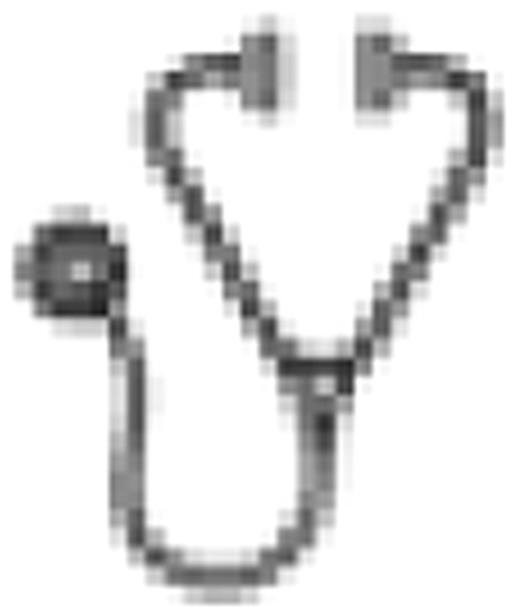Abstract
Abstract 3526
Alternative donor hematopoietic cell transplantation (AD-HCT) for patients with Fanconi anemia (FA) is challenging. We report on the outcomes of 94 patients with FA, median age 9.0 (range 1–33) years, who underwent AD-HCT at our institution from 1999–2010, using one of three consecutive prospective phase II total body irradiation (TBI) containing clinical trials. With each trial, one change was made from the previous trial to systematically study the optimal AD-HCT approach for FA patients. In Trial 1, from 1999–2003, fludarabine (FLU) 140 mg/m2 was added to the conventional cyclophosphamide (CY), antithymocyte globulin (ATG), TBI 450 cGy preparative regimen to overcome the high risk of graft failure. In Trial 2, from 2003–2006, CT guided thymic shielding (TS) was included during TBI to improve immune reconstitution. In Trial 3, from 2006–2010, a TBI dose-de-escalation trial with TS was performed to determine the lowest possible dose of TBI required for engraftment. All patients received CY 40 mg/kg, FLU 140 mg/m2, ATG and single fraction TBI using 150, 300 or 450 cGy, with or without TS as per specific protocol. Graft-versus-host disease (GVHD) prophylaxis consisted of cyclosporin A and methylprednisolone. Graft sources included T-cell depleted bone marrow (BM; n=75), single umbilical cord blood (UCB, n=17) or double UCB (n=2). At the time of HCT, 74 patients had aplastic anemia (AA) and 16 patients demonstrated early MDS defined as refractory anemia (RA, n=8), refractory anemia with ringed sideroblasts (RARS), RA with multilineage dysplasia (RCMD, n=4) or RCMD and ringed sideroblasts (RCMD-RS, n=4). One patient had RA with excess blasts-2 (RAEB-2) and 3 patients had acute myeloid leukemia (AML). For the entire cohort of 94 patients, probabilities of neutrophil and platelet engraftment were 97% and 75%, respectively. In Trial 3, two recipients of TBI 150 cGy developed secondary graft failure and dose de-escalation was stopped at TBI 300 cGy. For all patients, probabilities of grade II-IV and grade III-IV acute GVHD were 23% and 10%. Probability of chronic GVHD was 13%. In multivariate analysis of 89 patients (excluding 3 patients with GFR <40 and 2 recipients of TBI 150), higher 3-year mortality was associated with older age (>10 years), and any transfusions prior to HCT. Lower 3-year mortality was associated with Trial 3 (Table). Of the 8 patients in Trial 3 who were <10 years of age and never received transfusions before HCT, 7 are alive and well. Immune reconstitution and infectious disease data analyses are in progress.
Factors Associated with 3 Year Survival after HCT: Multiple Regression Analysis
| Factors . | N . | Relative Risk (95% CI) . | P-value . |
|---|---|---|---|
| Trial | |||
| 1: Cy-Flu-ATG-TBI 450* | 43 | 1.0 | |
| 2: Cy-Flu-ATG-TBI 450+TS | 16 | 0.7 (0.3–1.7) | 0.39 |
| 3: Cy-Flu–ATG-TBI 300+TS | 30 | 0.4 (0.1–1.0) | 0.04 |
| Age | |||
| 210* | 49 | 1.0 | |
| >10 | 40 | 2.1 (1.0–4.4) | 0.05 |
| Prior Transfusions | |||
| None* | 27 | 1.0 | |
| 1–20 | 45 | 2.7 (1.0–7.5) | 0.05 |
| >20 | 17 | 2.9 (1.0–8.8) | 0.06 |
| Factors . | N . | Relative Risk (95% CI) . | P-value . |
|---|---|---|---|
| Trial | |||
| 1: Cy-Flu-ATG-TBI 450* | 43 | 1.0 | |
| 2: Cy-Flu-ATG-TBI 450+TS | 16 | 0.7 (0.3–1.7) | 0.39 |
| 3: Cy-Flu–ATG-TBI 300+TS | 30 | 0.4 (0.1–1.0) | 0.04 |
| Age | |||
| 210* | 49 | 1.0 | |
| >10 | 40 | 2.1 (1.0–4.4) | 0.05 |
| Prior Transfusions | |||
| None* | 27 | 1.0 | |
| 1–20 | 45 | 2.7 (1.0–7.5) | 0.05 |
| >20 | 17 | 2.9 (1.0–8.8) | 0.06 |
reference
Based on the results of the largest single center analysis of alternative donor HCT for FA patients, four findings emerge: (1) TBI 300 cGy +TS with CY-FLU-ATG is sufficient for consistent engraftment but TBI 150 cGy +TS is not adequate; (2) rates of GVHD are low with T cell depletion; (3) patients with FA and marrow failure should be referred to HCT before receiving transfusions, and (4) superior survival is associated with CY-FLU-ATG-TBI 300+TS followed by T-cell depleted AD-BM or unmanipulated UCB, potentially due to enhanced immune recovery. Longer follow-up is required to determine whether this approach is associated with reduced late effects, particularly endocrinopathies and malignancy.
Wagner:CORD:USE: Membership on an entity's Board of Directors or advisory committees; VidaCord: Membership on an entity's Board of Directors or advisory committees.

This icon denotes a clinically relevant abstract
Author notes
Asterisk with author names denotes non-ASH members.

This feature is available to Subscribers Only
Sign In or Create an Account Close Modal